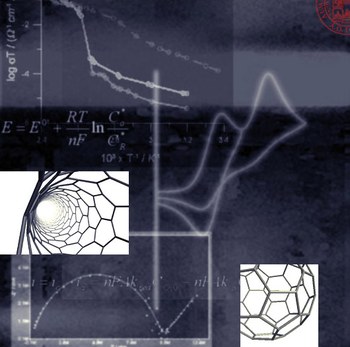
Welcome to the website of the electrochemistry group held by Prof. Francesco Paolucci, Prof. Giovanni Valenti and Prof. Massimo Marcaccio.
The Electrochemistry of Molecular and Functional Materials (EMFM) Group is the direct evolution of the Center for Polarography and Applied Electrochemistry, established in the 60s of the last century by Prof. Giovanni Semerano, who introduced polarography in Italy in the first decades of 1900, and directed by Prof. Sergio Roffia until his retirement in 2003.
A common feature of the Group activity, since its establishment, has been the continuous improvement of the theoretical-experimental approach to address electrochemical problems of different origins and scope, obtained through the progressive acquisition of different experimental techniques and theoretical tools relating to heterogeneous electron transfer processes in various contexts.
In particular, great attention was devoted to the realization of experimental conditions for the investigation of highly reactive electrogenerated organic and inorganic radicals and for the detection of elusive phenomena associated, e.g., to molecular recognition events based on hydrogen bonds. This was obtained by the application of highly aprotic conditions in the experiments, thanks to the use of high vacuum techniques and protocols for the purification of solvents, which ranged from the typical “electrochemical” organic solvents (DMF, ACN, DCM and THF) to liquid SO2 and amines.
The set of techniques originally in use in the Group included cyclic voltammetry and chronoamperometry, voltammetry under steady state and hydrodynamic conditions (RDE, RRDE), electrochemical impedance spectroscopy, UV-Vis-NIR spectroelectrochemistry, fast voltammetry by the use of ultramicroelectrodes and has been, more recently, enriched with the introduction of scanning probe techniques, such as SECM, AFM and STM, the development of the experimental setup for the ECL (Electrogenerated Chemiluminescence, aka Electrochemiluminescence) and with the instrumentation for the investigation of electrocatalytic processes (GDE, on line-chromatography)
Digital simulation methods and finite elements modelling have consistently been used in the Group for the analysis and interpretation of the experimental results.